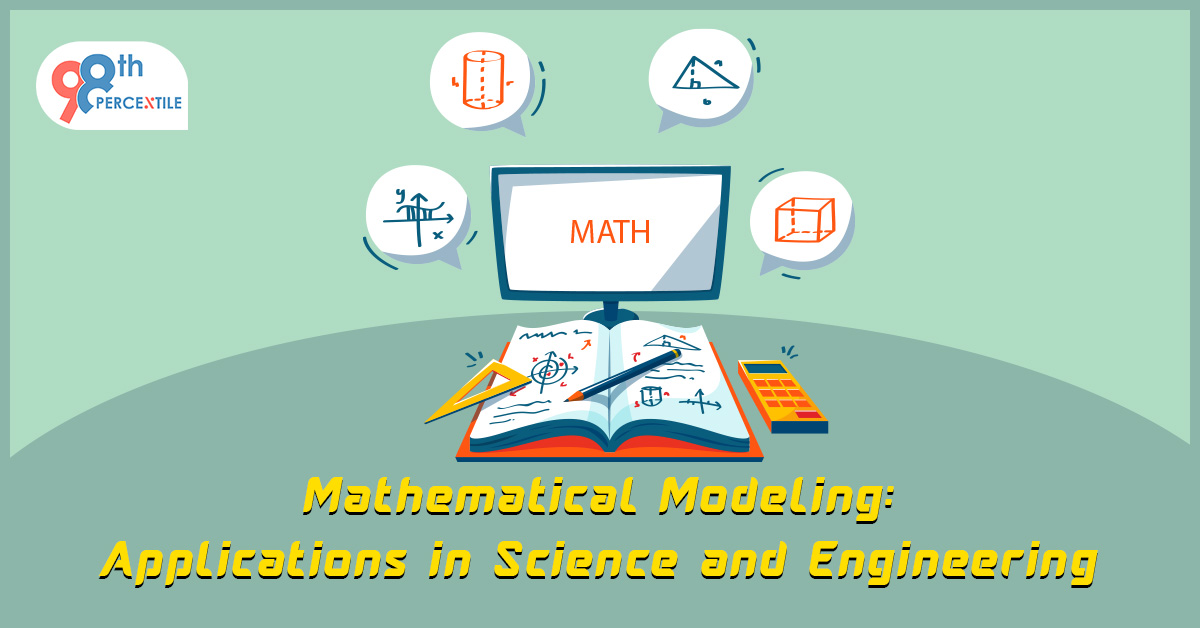Mathematics has traditionally been considered an abstract and theoretical science, frequently connected with complicated equations and theorems. However, hidden behind the veil of pure abstraction is a tremendous instrument that has transformed how we comprehend and interact with the world around us: mathematical modeling. This article explores the practical side of mathematics, highlighting its real-world applications in science and engineering via the perspective of mathematical modeling.
Mathematical Modeling
At its core, mathematical modeling involves the creation of mathematical representations to describe, analyze, and predict real-world phenomena. These models serve as virtual mirrors, reflecting the complex interactions between factors and assisting scientists and engineers in making educated judgments. Modeling often begins with identifying a problem, choosing important variables, constructing equations, and then solving or simulating these equations to get insights into the system being studied.
Usage in Physics
Physics is one of the earliest and most fundamental uses of mathematical modeling. From classical mechanics to quantum physics, mathematical models have played an important part in uncovering the secrets of the cosmos. Newton's laws of motion, Maxwell's equations, and Schrödinger's wave equation are all examples of powerful mathematical models that have shaped our understanding of the physical world.
In astrophysics, mathematical modeling is critical for forecasting celestial movements, understanding star behavior, and even modeling the structure of galaxies. The use of mathematical models enables scientists to investigate events that would be difficult or prohibitive to see directly, so giving a window into the universe.
Start Your Child's Math Journey Now!
Usage in Biology
Moving from the immensity of space to the complexities of life, mathematical modeling has several applications in biology. Mathematical models help biologists understand complicated systems ranging from population dynamics to disease propagation. For example, epidemiological models are useful in forecasting the spread of infectious illnesses, allowing health professionals to execute effective control measures.
Mathematics is also used extensively in ecological modeling. Models may model the interactions of diverse species in an ecosystem, anticipate the effects of environmental changes, and help guide conservation efforts. Understanding and predicting ecosystem dynamics is critical for preserving biodiversity and safeguarding our planet's long-term viability.
Usage in Engineering
Mathematical modeling is an essential component of engineering design and analysis. Engineers employ mathematical models to simulate and optimize the behavior of structures, systems, and processes. Civil engineers, for example, use structural models to forecast how a structure will behave to various loads, ensuring that safety requirements are met.
Circuit modeling is used in electrical engineering to develop and optimize electronic devices. Engineers utilize mathematical equations to depict the behavior of electrical components, which allows them to forecast a circuit's performance before it is built.
Usage in Environmental Science
Environmental science is another area where mathematical modeling is essential. Climate models, for example, assist scientists in understanding the intricate interactions that occur between the atmosphere, seas, and land surface. These models are essential for projecting climate trends, analyzing the environmental effect of human activities, and developing climate change mitigation methods.
Hydrological models replicate the flow and distribution of water in natural systems. This is critical for managing water resources, forecasting floods, and determining the impact of land use changes on water supply. Environmental scientists can utilize mathematical models to make educated judgments about how to maintain ecosystems and manage natural resources sustainably.
Constraints and Potential Directions
While mathematical modeling has proven to be a powerful tool in various scientific and engineering disciplines, it is not without its challenges. Real-world systems are frequently complicated and dynamic, thus developing accurate models necessitates a thorough grasp of the underlying processes. Furthermore, uncertainties in data and parameters might have an influence on model dependability, stressing the importance of continuous refinement and validation.
Looking ahead, advances in processing power and data gathering technologies create intriguing potential for mathematical modeling. High-performance computing enables scientists and engineers to solve more complicated problems and mimic bigger systems more accurately. Furthermore, the integration of machine learning techniques into mathematical modeling opens up new possibilities for data-driven modeling and optimization.
Book 2-Week Math Trial Classes Now!
In conclusion, mathematical modeling serves as a bridge between abstract mathematical concepts and the practical challenges faced by scientists and engineers. Its applications in physics, biology, engineering, and environmental science demonstrate mathematical models' adaptability and capacity to comprehend, predict, and shape the world around us. As technology progresses, mathematical modeling will play an increasingly important role in advancing research, engineering, and our collective knowledge of the universe's rich fabric.

 Students/Staff
Students/Staff Parents
Parents ElevatEd
ElevatEd















